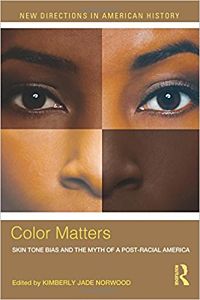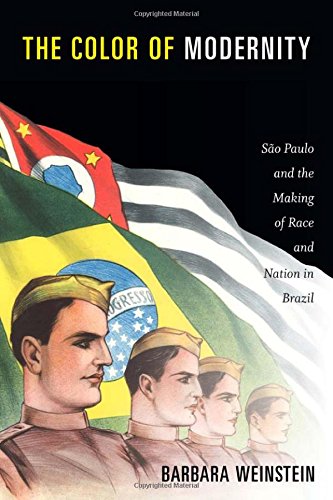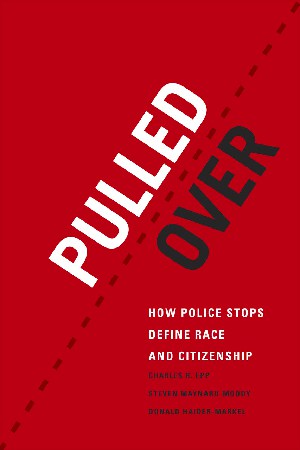It’s a theme that has been the subject of countless books, articles, monologues and debates: race. We’ve touched upon it in many of the reviews posted, but never focused on it specifically – until now. So here it is: our list of some of the most interesting recent releases on #race and interconnected themes, as ever with a call for reviews. If you are interested in reviewing one of the books featured, contact Allegra’s reviews editor Judith Beyer or reviews assistant Rosie Gant at reviews@allegralaboratory.net and they will send out a copy.
Here are our review guidelines:
As we receive many requests for reviews, please write 2-3 sentences why you should be reviewing this book, indicating how it relates to your own research or interests.
Spelling: British English. Please use –ise and not –ize word endings.
Word limit: 750-1500 words.
Font: Times New Roman.
Size: 12.
Line Spacing: 1,5
No footnotes.
If you cite other authors, please reference their publication in the end.
The review is to be written within three months from the dispatch of the book.
When submitting the review, do not forget to include your name, (academic) affiliation, a photograph of yourself and a short bio of 2-3 sentences.
In this pathbreaking book, Dan Berger offers a bold reconsideration of twentieth century black activism, the prison system, and the origins of mass incarceration. Throughout the civil rights era, black activists thrust the prison into public view, turning prisoners into symbols of racial oppression while arguing that confinement was an inescapable part of black life in the United States. Black prisoners became global political icons at a time when notions of race and nation were in flux. Showing that the prison was a central focus of the black radical imagination from the 1950s through the 1980s, Berger traces the dynamic and dramatic history of this political struggle.
The prison shaped the rise and spread of black activism, from civil rights demonstrators willfully risking arrests to the many current and former prisoners that built or joined organizations such as the Black Panther Party. Grounded in extensive research, Berger engagingly demonstrates that such organizing made prison walls porous and influenced generations of activists that followed.
In this ethnographic examination of Mexican-American and white girls coming of age in California’s Central Valley, Julie Bettie turns class theory on its head, asking what cultural gestures are involved in the performance of class, and how class subjectivity is constructed in relationship to color, ethnicity, gender, and sexuality. A new introduction contextualizes the book for the contemporary moment and situates it within current directions in cultural theory. Investigating the cultural politics of how inequalities are both reproduced and challenged, Bettie examines the discursive formations that provide a context for the complex identity performances of contemporary girls. The book’s title refers at once to young working-class women who have little cultural capital to enable class mobility; to the fact that analyses of class too often remain insufficiently transformed by feminist, ethnic, and queer studies; and to the failure of some feminist theory itself to theorize women as class subjects. Women without Class makes a case for analytical and political attention to class, but not at the expense of attention to other social formations.
Pulled Over deftly traces the strange history of the investigatory police stop, from its discredited beginning as “aggressive patrolling” to its current status as accepted institutional practice. Drawing on the richest study of police stops to date, the authors show that who is stopped and how they are treated convey powerful messages about citizenship and racial disparity in the United States. For African Americans, for instance, the experience of investigatory stops erodes the perceived legitimacy of police stops and of the police generally, leading to decreased trust in the police and less willingness to solicit police assistance or to self-censor in terms of clothing or where they drive. This holds true even when police are courteous and respectful throughout the encounters and follow seemingly colorblind institutional protocols. With a growing push in recent years to use local police in immigration efforts, Hispanics stand poised to share African Americans’ long experience of investigative stops.
 Jablonski, Nina G. 2014. Living Color: The Biological and Social Meaning of Skin Colour. California: University of California Press. pp 280. Pb £19.95. ISBN: 9780520283862.
Jablonski, Nina G. 2014. Living Color: The Biological and Social Meaning of Skin Colour. California: University of California Press. pp 280. Pb £19.95. ISBN: 9780520283862.
Living Color is the first book to investigate the social history of skin color from prehistory to the present, showing how our body’s most visible trait influences our social interactions in profound and complex ways. In a fascinating and wide-ranging discussion, Nina G. Jablonski begins with the biology and evolution of skin pigmentation, explaining how skin color changed as humans moved around the globe. She explores the relationship between melanin pigment and sunlight, and examines the consequences of rapid migrations, vacations, and other lifestyle choices that can create mismatches between our skin color and our environment.
Richly illustrated, this book explains why skin color has come to be a biological trait with great social meaning – a product of evolution perceived by culture. It considers how we form impressions of others, how we create and use stereotypes, how negative stereotypes about dark skin developed and have played out through history – including being a basis for the transatlantic slave trade. Offering examples of how attitudes about skin color differ in the U.S., Brazil, India, and South Africa, Jablonski suggests that a knowledge of the evolution and social importance of skin color can help eliminate color-based discrimination and racism.
 Najera, Jennifer. 2015. The Borderlands of Race: Mexican Segregation in a South Texas Town. University of Texas Press. 200 pp. HB: $45.00. ISBN: 9780292767553.
Najera, Jennifer. 2015. The Borderlands of Race: Mexican Segregation in a South Texas Town. University of Texas Press. 200 pp. HB: $45.00. ISBN: 9780292767553.
Using oral histories and local archives, this historical ethnography analyzes how and why Mexican American individuals unevenly experienced racial dominance and segregation in South Texas.
 Ngai, Mae M. 2014. Impossible Subjects: Illegal Aliens and the Making of Modern America. Princeton: Princeton University Press. 416 pp. Pb: $22.95. ISBN: 9780691160825.
Ngai, Mae M. 2014. Impossible Subjects: Illegal Aliens and the Making of Modern America. Princeton: Princeton University Press. 416 pp. Pb: $22.95. ISBN: 9780691160825.
This book traces the origins of the “illegal alien” in American law and society, explaining why and how illegal migration became the central problem in U.S. immigration policy – a process that profoundly shaped ideas and practices about citizenship, race, and state authority in the twentieth century.
Mae Ngai offers a close reading of the legal regime of restriction that commenced in the 1920s – its statutory architecture, judicial genealogies, administrative enforcement, differential treatment of European and non-European migrants, and long-term effects. In well-drawn historical portraits, Ngai peoples her study with the Filipinos, Mexicans, Japanese, and Chinese who comprised, variously, illegal aliens, alien citizens, colonial subjects, and imported contract workers. She shows that immigration restriction, particularly national-origin and numerical quotas, re-mapped the nation both by creating new categories of racial difference and by emphasizing as never before the nation’s contiguous land borders and their patrol. This yielded the “illegal alien”, a new legal and political subject whose inclusion in the nation was a social reality but a legal impossibility – a subject without rights and excluded from citizenship. Questions of fundamental legal status created new challenges for liberal democratic society and have directly informed the politics of multiculturalism and national belonging in our time.
 Norwood, Kimberly Jane. (ed.) 2014. Color Matters: Skin Tone Bias and the Myth of a Postracial America. London: Routledge. 256 pp. PB: $39.95. ISBN: 9780415517751.
Norwood, Kimberly Jane. (ed.) 2014. Color Matters: Skin Tone Bias and the Myth of a Postracial America. London: Routledge. 256 pp. PB: $39.95. ISBN: 9780415517751.
In the United States, as in many parts of the world, people are discriminated against based on the color of their skin. This type of skin tone bias, or colorism, is both related to and distinct from discrimination on the basis of race, with which it is often conflated. Preferential treatment of lighter skin tones over darker occurs within racial and ethnic groups as well as between them. While America has made progress in issues of race over the past decades, discrimination on the basis of color continues to be a constant and often unremarked part of life.
In Color Matters, Kimberly Jade Norwood has collected the most up-to-date research on this insidious form of discrimination, including perspectives from the disciplines of history, law, sociology, and psychology. Anchored with historical chapters that show how the influence and legacy of slavery have shaped the treatment of skin color in American society, the contributors to this volume bring to light the ways in which colorism affects us all – influencing what we wear, who we see on television, and even which child we might pick to adopt. Sure to be an eye-opening collection for anyone curious about how race and color continue to affect society, Color Matters provides students of race in America with wide-ranging overview of a crucial topic.
 Rotbard, Sharon. 2015. White City, Black City: Architecture and War in Tel Aviv and Jaffa. Cambridge, MA: MIT Press. 256 pp. Pb $24.95. ISBN: 9780262527729.
Rotbard, Sharon. 2015. White City, Black City: Architecture and War in Tel Aviv and Jaffa. Cambridge, MA: MIT Press. 256 pp. Pb $24.95. ISBN: 9780262527729.
In 2004, the city of Tel Aviv was declared by UNESCO a World Heritage Site, an exemplar of modernism in architecture and town planning. Today, the Hebrew city of Tel Aviv gleams white against the desert sky, its Bauhaus-inspired architecture betraying few traces of what came before it: the Arab city of Jaffa. In White City, Black City, the Israeli architect and author Sharon Rotbard offers two intertwining narratives, that of colonized and colonizer. It is also a story of a decades-long campaign of architectural and cultural historical revision that cast Tel Aviv as a modernist “white city” emerging fully formed from the dunes while ignoring its real foundation – the obliteration of Jaffa. Rotbard shows that Tel Aviv was not, as a famous poem has it, built “from sea foam and clouds” but born in Jaffa and shaped according to its relation to Jaffa. His account is not only about architecture but also about war, destruction, Zionist agendas, erasure, and the erasure of the erasure.
 Sussman, Robert Wald. 2014. The Myth of Race: The Troubling Persistence of an Unscientific Idea. Cambridge, MA: Harvard University Press. 384 pp. Hb: $35.00 ISBN: 9780674417311.
Sussman, Robert Wald. 2014. The Myth of Race: The Troubling Persistence of an Unscientific Idea. Cambridge, MA: Harvard University Press. 384 pp. Hb: $35.00 ISBN: 9780674417311.
The Myth of Race traces the origins of modern racist ideology to the Spanish Inquisition, revealing how sixteenth-century theories of racial degeneration became a crucial justification for Western imperialism and slavery. In the nineteenth century, these theories fused with Darwinism to produce the highly influential and pernicious eugenics movement. Believing that traits from cranial shape to raw intelligence were immutable, eugenicists developed hierarchies that classified certain races, especially fair-skinned “Aryans”, as superior to others. These ideologues proposed programs of intelligence testing, selective breeding, and human sterilization – policies that fed straight into Nazi genocide. Sussman examines how opponents of eugenics, guided by the German-American anthropologist Franz Boas’s new, scientifically supported concept of culture, exposed fallacies in racist thinking. Although eugenics is now widely discredited, some groups and individuals today claim a new scientific basis for old racist assumptions. Pondering the continuing influence of racist research and thought, despite all evidence to the contrary, Sussman explains why – when it comes to race – too many people still mistake bigotry for science.
 Weheliye, Alexander G. 2014. Habeas Viscus: Racializing Assemblages, Biopolitics, and Black Feminist Theories of the Human. Durham: Duke University Press. 224 pp. Pb: $23.95. ISBN: 97808223-57018.
Weheliye, Alexander G. 2014. Habeas Viscus: Racializing Assemblages, Biopolitics, and Black Feminist Theories of the Human. Durham: Duke University Press. 224 pp. Pb: $23.95. ISBN: 97808223-57018.
Habeas Viscus focuses attention on the centrality of race to notions of the human. Alexander G. Weheliye develops a theory of “racializing assemblages”, taking race as a set of sociopolitical processes that discipline humanity into full humans, not-quite-humans, and nonhumans. This disciplining, while not biological per se, frequently depends on anchoring political hierarchies in human flesh. The work of the black feminist scholars Hortense Spillers and Sylvia Wynter is vital to Weheliye’s argument. Particularly significant are their contributions to the intellectual project of black studies vis-à-vis racialization and the category of the human in western modernity. Wynter and Spillers configure black studies as an endeavor to disrupt the governing conception of humanity as synonymous with white, western man. Weheliye posits black feminist theories of modern humanity as useful correctives to the “bare life and biopolitics discourse” exemplified by the works of Giorgio Agamben and Michel Foucault, which, Weheliye contends, vastly underestimate the conceptual and political significance of race in constructions of the human. Habeas Viscus reveals the pressing need to make the insights of black studies and black feminism foundational to the study of modern humanity.
 Weinstein, Barbara. 2015. The Color of Modernity: São Paulo and the Making of Race and Nation in Brazil. Durham: Duke University Press. 472 pp. Pb: $29.95. ISBN: 9780822357773.
Weinstein, Barbara. 2015. The Color of Modernity: São Paulo and the Making of Race and Nation in Brazil. Durham: Duke University Press. 472 pp. Pb: $29.95. ISBN: 9780822357773.
In The Color of Modernity, Barbara Weinstein focuses on race, gender, and regionalism in the formation of national identities in Brazil; this focus allows her to explore how uneven patterns of economic development are consolidated and understood. Organized around two principal episodes – the 1932 Constitutionalist Revolution and 1954’s IV Centenário, the quadricentennial of São Paulo’s founding – this book shows how both elites and popular sectors in São Paulo embraced a regional identity that emphasized their European origins and aptitude for modernity and progress, attributes that became – and remain –associated with “whiteness”. This racialized regionalism naturalized and reproduced regional inequalities, as São Paulo became synonymous with prosperity while Brazil’s Northeast, a region plagued by drought and poverty, came to represent backwardness and São Paulo’s racial “Other”. This view of regional difference, Weinstein argues, led to development policies that exacerbated these inequalities and impeded democratization.
 Werbner, Pnina and Modood, Tariq. 2015. Debating Cultural Hybridity: Multicultural Identities and the Politics of Anti-Racism [new edition]. London: Zed Books. 320 pp. Pb: $19.99. ISBN: 9781783601615.
Werbner, Pnina and Modood, Tariq. 2015. Debating Cultural Hybridity: Multicultural Identities and the Politics of Anti-Racism [new edition]. London: Zed Books. 320 pp. Pb: $19.99. ISBN: 9781783601615.
Bringing together some of the world’s most influential postcolonial theorists, Debating Cultural Hybridity examines the place and meaning of cultural hybridity in our ever-more-connected, yet crisis-ridden and xenophobic world. Taking as its starting point the fact that personal identities are themselves multicultural, the contributors illuminate the complexity and flexibility of culture and identity, defining their potential openness as well as their closures, to show why anti-racism and multiculturalism remain so difficult to fight for, even today.
**************
Featured photo by Chris Jones (flickr, CC BY-NC 2.0)





